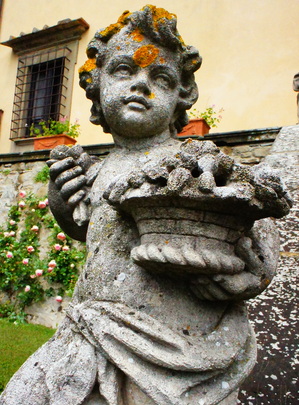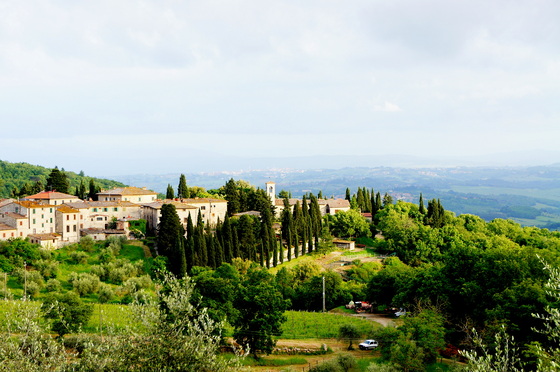CASTELLINA-IN CHIANTI--Tuscany covers as many acres as New Jersey, though that's where the comparison ends. the Italian Regione of Tuscany has only half as many inhabitants as the (awkwardly named) Garden State.
For many travelers, Tuscany represents all the charm and delight that is Italian, not just the cities like Florence and Siena, crowded with tourists, but the countryside as well: verdant hillsides covered with vineyards and olive trees. There are magnificent museums filled with some of the greatest art to come out of the Renaissance.
Italy's high-speed FrecciaRossa trains zip from one end of Tuscany to the other in no time flat, and there's the A1 autostrada for long haul trips, but a trip into the vineyards requires two-lane country roads that follow wagon paths from Roman times. (If you're driving a rental, be prepared to see Luigi Lamborghini climb up your tailpipe.) You can crisscross Napa on broad highways, but navigating Tuscany takes time.
 Famous names aplenty for wine lovers: first and foremost there's Chianti, of course, but also Montalcino (for Brunello), Montepulciano (for Vino Nobile). Not to mention the SuperTuscans from vineyards planted along the Maremma coastline. And there's more than one zone for Chianti: Colli Senesi, Colli Fiorentini, Colli Aretini, Colline Pisane, all named for local towns (Siena, Firenze, Arezzo, Pisa).
Famous names aplenty for wine lovers: first and foremost there's Chianti, of course, but also Montalcino (for Brunello), Montepulciano (for Vino Nobile). Not to mention the SuperTuscans from vineyards planted along the Maremma coastline. And there's more than one zone for Chianti: Colli Senesi, Colli Fiorentini, Colli Aretini, Colline Pisane, all named for local towns (Siena, Firenze, Arezzo, Pisa).
The original Chianti, that juicy red wine in the straw-covered bottle? It grew up! No more fiasco! Its name is now Chianti Classico, limited to the zone between Florence and Siena, with the familiar black rooster (gallo nero) as its emblem. Lower yields, higher alcohol, more aging. Marchese Antinori just opened a winery here. the Banfi conglomerate has had its flagship Castello Banfi in Montalcino for centuries. The Zonin family (you've seen their Prosecco on the shelves, I'm sure) counts among its many properties the magnficent Castello d'Albola near Rada in Chianti. In all, nearly 700 growers (400 of them also bottling wine) make up the association of Chianti Classico producers.
The wineries are more like multi-faceted country estates, many have rooms to rent, some have restaurants open to the public, offer cooking classes, spa treatments, their own production of olive oil, and so on. In the market towns you'll find artisanal bakeries, butcher shops and cheese makers catering not just to locals but the throngs of visitors (from Germany, from South America, from Asia) who buy tee shirts and stuffed-animal cinghiale (wild boar) from souvenir stands in the shadow of the 14th century church.
More than most Italian regions, Tuscany seems to understand how important it is to look good for company: its landscapes are manicured, its old stones lovingly maintained.
What brings this recent visit to mind is a piece in this weekend's Wall Street Journal titled "The Swanky Side of Rustic Tuscany." Blame it all on Frances Mayes, whose romanticized look at life under the Tuscan sun started the boom in property values, now said to be abating...if, by abating, we agree to drop the price a shade under $5 million for a typical restored farmhouse with pool and vineyards). If it's village life you're after, the WSJ suggests a simple apartment in Radda-in-Chianti for half a million. Me, I say let's just open a bottle of Chianti Classico and look at the videos. Less hassle, no airport crowds, no getting lost on the back roads.


Leave a comment